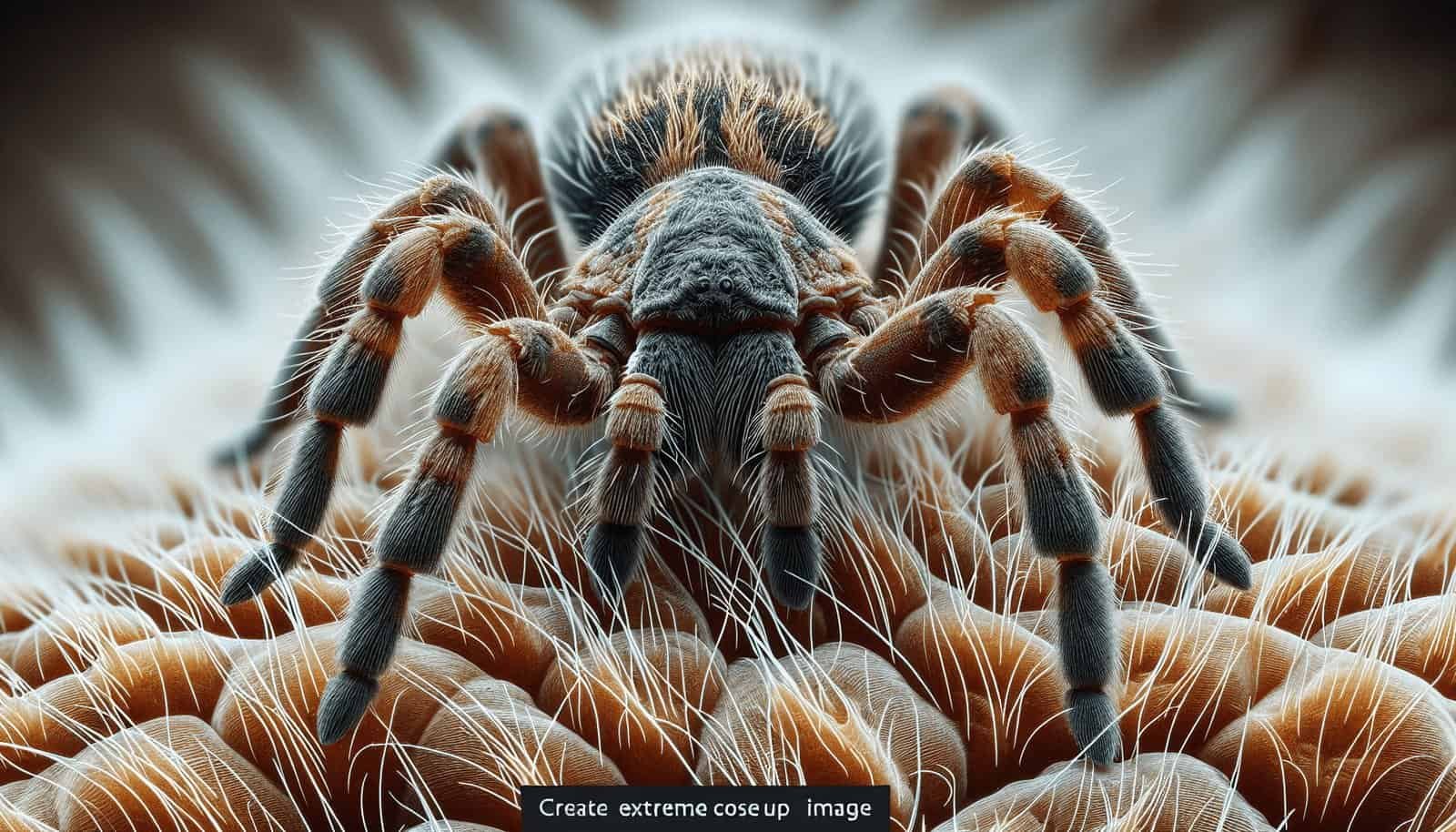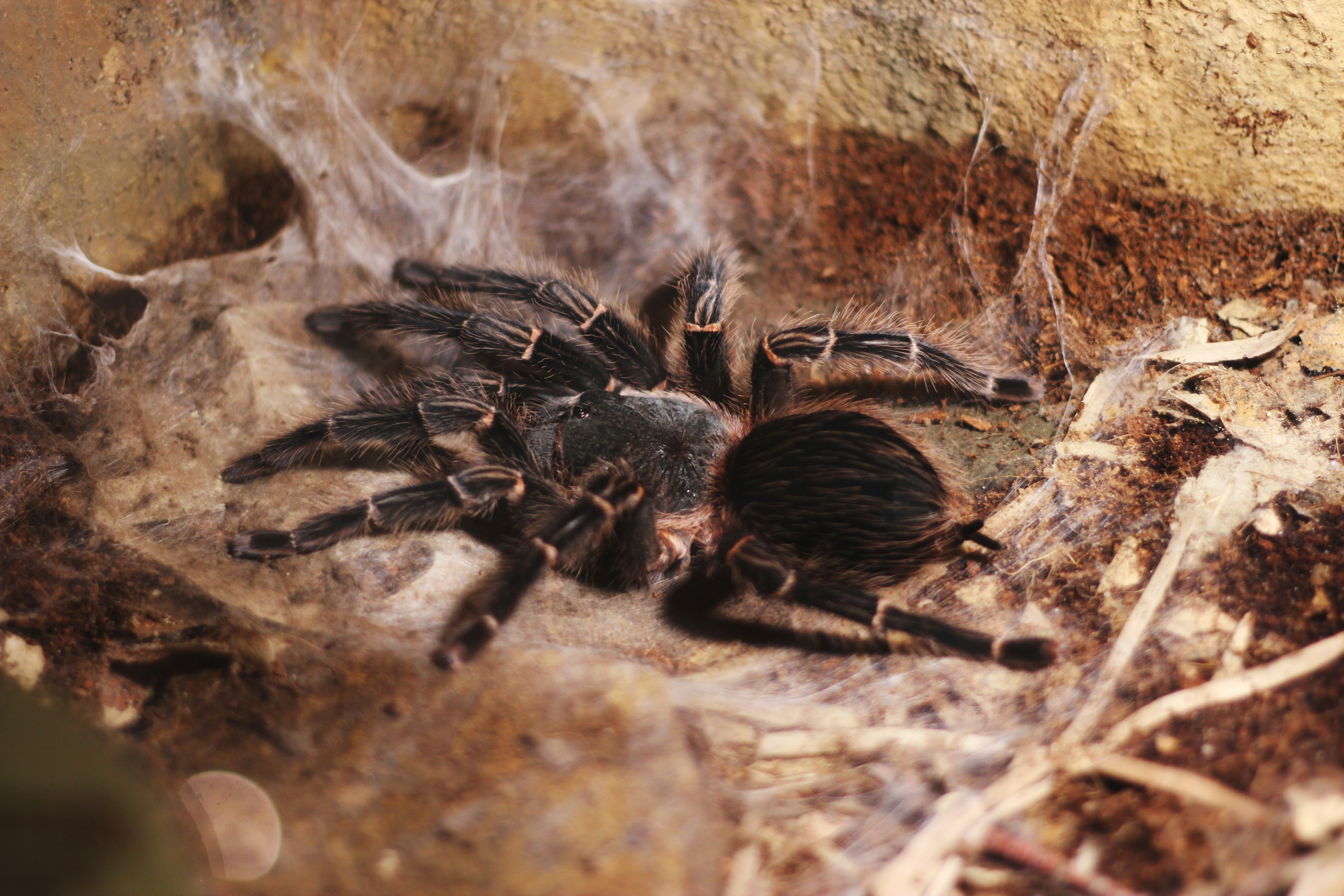If you’re a proud owner of a pet tarantula, chances are you’ve encountered pesky mites in their enclosure. These tiny arachnid parasites can cause discomfort and health issues for your hairy eight-legged friend. In this article, we will explore effective methods to prevent and treat mites in a tarantula enclosure, ensuring a happy and mite-free habitat for your beloved tarantula. So, let’s dive into the world of mite prevention and treatment, and give your tarantula the care it deserves!
Understanding Mites in Tarantula Enclosures
What are mites?
Mites are tiny arachnids that are often found in tarantula enclosures. These pests are usually about the size of a pinhead and can be difficult to see with the naked eye. Mites belong to the subclass Acari and can come in various species. They are commonly known as parasites that feed on the blood and bodily fluids of their hosts.
Why are mites a problem in tarantula enclosures?
Mites can be a significant problem in tarantula enclosures because they can irritate and stress out the tarantula, leading to reduced appetite, weakened immune system, and overall poor health. They can also cause physical damage by feeding on the tarantula’s hemolymph, leading to anemia and, in severe cases, even death. Additionally, mite infestations can spread from one tarantula to another, causing a widespread issue if not addressed promptly.
Signs of mite infestation
It’s essential to be vigilant and be able to identify the signs of mite infestation in tarantula enclosures. Some common signs include:
-
Excessive grooming: If you notice your tarantula constantly grooming or rubbing against its enclosure, it may be a sign of mites irritating its skin.
-
Visible mites: In severe infestations, you may notice tiny moving dots on the tarantula’s body or in the enclosure substrate.
-
Discoloration: Mites can cause discoloration or dark spots on the tarantula’s exoskeleton.
-
Restlessness: Mite-infested tarantulas may appear restless and skittish, often moving around more frequently than usual.
-
Decreased appetite: Mite infestations can lead to a loss of appetite in tarantulas, causing them to refuse food or eat significantly less than usual.
Preventing Mites in Tarantula Enclosures
Quarantine new tarantulas
When introducing new tarantulas to your collection, it is crucial to quarantine them for at least a month before placing them in the same enclosure as your existing tarantulas. Quarantining allows you to observe and ensure the new tarantula is healthy and free from mites or other potential parasites. This practice helps prevent the spread of mites to your established tarantula population.
Maintain proper hygiene
Regularly cleaning the tarantula enclosure is essential for preventing mites. Remove any leftover prey items, shed exoskeletons, and uneaten food promptly. Keep the enclosure clean and free from excess moisture, as mites thrive in damp environments.
Avoid overcrowding
Overcrowded enclosures can increase the risk of mite infestations. Provide each tarantula with ample space to move around. Overcrowding creates stress for the tarantulas, making them more susceptible to mites and other health issues. Ensure that the enclosure size is appropriate for the tarantula’s size and activity level.
Control temperature and humidity levels
Maintaining optimal temperature and humidity levels in your tarantula’s enclosure is key to preventing mite infestations. Research the specific requirements of your tarantula species and strive to create the ideal environment. Avoid drastic temperature fluctuations and maintain proper ventilation to minimize the risk of mold or excessive moisture.
Treating Mite Infestations in Tarantula Enclosures
Identify the extent of the infestation
Before proceeding with treatment, it is essential to determine the severity of the mite infestation. Check all tarantulas in the affected enclosure and look for mites on their bodies. If mites are present, it is likely that the entire enclosure is infested.
Isolate affected tarantulas
To prevent the mites from spreading further, isolate the affected tarantulas in a separate, clean enclosure. This will help contain the infestation and make the treatment process more effective.
Clean the enclosure
Thoroughly clean the affected enclosure to remove any mites, eggs, or debris. Remove and replace the substrate, clean all the decorations and hideouts, and wash any reusable items such as water dishes or plants. Use a mild, tarantula-safe cleaning solution to ensure you remove all traces of mites.
Use acaricides or insecticides
After cleaning the enclosure, you may choose to use acaricides or insecticides specifically formulated for tarantula mite treatment. These treatments should be used with caution, following the product instructions carefully. Always choose a product that is safe for use with tarantulas and follow the recommended dosage.
Repeat treatment if necessary
Mite infestations can be stubborn, and a single treatment may not be enough to eradicate them entirely. Monitor your tarantulas closely after treatment and repeat the process if you notice any remaining mites or signs of reinfestation.
Natural Remedies for Mite Infestations
Using predatory mites
Introducing predatory mites into the tarantula enclosure can help control mite populations naturally. Predatory mites feed on pests such as mites and can help eliminate them without posing any harm to the tarantulas. However, it is crucial to research the species of predatory mites carefully, as some may feed on tarantula eggs or cause harm if their population grows too large.
Introducing beneficial insects
Certain beneficial insects, such as springtails or isopods, can help maintain a healthy enclosure environment and control mite populations. These insects thrive on decaying matter and can reduce the chances of mite infestations by consuming mite eggs and debris. However, it is important to ensure that these insects do not become overpopulated and stress the tarantula.
Maintaining a clean environment
Regularly cleaning and maintaining a clean enclosure is crucial for preventing mite infestations naturally. Remove any uneaten food, shed exoskeletons, or debris promptly. Maintain proper humidity and ventilation levels, and make sure the substrate is dry and free from mold or excessive moisture.
Consulting a Veterinarian
Seeking professional advice
If you are unsure about treating mite infestations in your tarantula enclosure or if the infestation persists despite your efforts, it is wise to consult a veterinarian experienced in exotic pets. They can provide guidance and recommend the most appropriate treatment options for your specific situation.
Prescription treatments
In severe mite infestations or cases where natural remedies have failed, a veterinarian may prescribe specific medications or treatments to help eliminate the mites more effectively. Follow the vet’s instructions carefully to ensure the safety and well-being of your tarantulas.
Follow vet instructions
It is vital to follow the veterinarian’s instructions for treating mite infestations precisely. Use the prescribed medication or treatment as directed, and provide any necessary follow-up care or monitoring. Regular communication with the veterinarian will ensure that you are on the right track to resolve the mite issue successfully.
Avoiding Common Mistakes
Ignoring early signs
Ignoring early signs of mite infestation can lead to a more significant problem in the future. It is crucial to address any unusual behavior, decreased appetite, or visible mites promptly. Acting quickly can prevent the infestation from spreading and causing harm to your tarantulas.
Using incorrect dosages of treatments
Using incorrect dosages of acaricides or insecticides can be dangerous for your tarantulas. Always read and follow the product instructions carefully. Consult with a veterinarian or experienced tarantula keeper if you are unsure about the appropriate dosage or treatment method.
Improper enclosure setup
A poorly designed or maintained enclosure can create an ideal environment for mites to thrive. Ensure that your tarantula’s enclosure is set up correctly, providing adequate ventilation, appropriate substrate, and suitable hiding spots. An improper enclosure setup can make it easier for mites to infest and spread.
Not properly quarantining new tarantulas
Failing to quarantine new tarantulas before introducing them to your existing collection can lead to mite infestations and other health issues. Always quarantine new tarantulas for at least a month to observe their health and prevent the spread of potential parasites or diseases.

General Tips for Tarantula Enclosure Maintenance
Regularly clean the enclosure
Cleaning the tarantula enclosure regularly is crucial for maintaining a healthy environment and preventing mite infestations. Remove any uneaten food, shed exoskeletons, or debris, and replace the substrate as needed. Regular cleaning keeps the enclosure clean and reduces the risk of mites or other pests.
Monitor temperature and humidity
Regularly monitor and maintain appropriate temperature and humidity levels in the tarantula enclosure. Research the specific requirements for your tarantula species and make sure they are met. Avoid sudden temperature fluctuations and provide proper ventilation to prevent excessive humidity.
Provide appropriate hiding spots
Tarantulas require hiding spots to feel secure and comfortable. Ensure that your tarantula’s enclosure has appropriate hiding spots, such as cork bark or artificial plants. Having suitable hiding spots reduces stress and helps maintain overall health.
Choose suitable substrate
Choosing the right substrate for your tarantula’s enclosure is crucial. Substrate options such as coconut fiber or peat moss provide a suitable environment while minimizing the risk of mold or excessive moisture. Avoid substrates that may contain harmful chemicals or irritants.
Avoid overfeeding
Overfeeding can lead to excess waste and uneaten prey items, creating an ideal breeding ground for mites and other pests. Follow a proper feeding schedule and offer your tarantula an appropriate portion size. Avoid leaving uneaten prey items in the enclosure for extended periods.
Preventing Mites from Spreading to Other Tarantulas
Properly quarantine new tarantulas
Quarantining new tarantulas before introducing them to your existing collection is crucial for preventing the spread of mites. Keep the new tarantulas in a separate enclosure for at least a month and monitor them closely for any signs of mites or other health issues.
Separate infected tarantulas
If you discover mites in one tarantula’s enclosure, isolate the affected tarantula immediately. This prevents the mites from spreading to the other tarantulas. Keep the infected tarantula in a separate enclosure and begin the appropriate treatment process.
Maintain separate tools and equipment
To minimize the risk of cross-contamination, it is essential to use separate tools and equipment for each tarantula enclosure. This includes feeding tongs, water dishes, and any other items used in the maintenance of the enclosures. Clean and disinfect these items thoroughly after each use.
Clean your hands and clothing
When handling infected tarantulas or working with multiple enclosures, it is crucial to wash your hands thoroughly before and after each interaction. Additionally, avoid transferring mites by wearing dedicated clothing or using disposable gloves when working with the tarantulas.

Observing Tarantula Behavior and Health
Regularly check for unusual behavior
Regularly observe your tarantulas for any unusual behavior. Look for signs of stress, excessive grooming, or erratic movements. Changes in behavior could indicate mite infestations or underlying health issues that need to be addressed promptly.
Monitor eating habits
Keep an eye on your tarantula’s eating habits. A sudden loss of appetite or refusal to eat can be a sign of mite infestation or other underlying health concerns. Monitoring their feeding patterns helps you identify potential issues early on.
Examine tarantula’s physical condition
Regularly inspect your tarantula for physical changes or abnormalities. Look for discoloration, wounds, or visible mites on their body. Keep a record of their physical condition to track any changes over time.
Look for signs of stress or illness
Tarantulas that are stressed or unwell may exhibit certain signs such as excessive pacing, reluctance to leave their hiding spot, or abnormal posture. If you notice these signs, it is essential to address the underlying cause and ensure their well-being.
Seeking Professional Help
When to consult an experienced tarantula keeper
If you are a novice tarantula keeper or encounter challenging mite infestations, seeking advice from an experienced tarantula keeper can be beneficial. They can provide guidance on treatment methods, enclosure setup, or general tarantula care based on their own experiences.
Finding a local tarantula enthusiast
Connect with local tarantula enthusiasts or join local tarantula clubs or groups. These individuals can offer valuable insights, share their expertise, and provide support and guidance when dealing with mite infestations or other tarantula-related concerns.
Joining tarantula forums or social media groups
Online tarantula forums and social media groups dedicated to tarantula keepers provide a platform for sharing experiences and seeking advice. Engaging with these communities can help you learn from others who have encountered similar mite infestations and gain valuable insights into prevention and treatment methods.
By understanding the nature of mites, implementing preventive measures, treating infestations promptly, and ensuring proper tarantula enclosure maintenance, you can minimize the risk of mites and maintain a healthy environment for your tarantulas. Regular observation, seeking professional help when needed, and connecting with fellow tarantula enthusiasts will contribute to the overall well-being and enjoyment of your tarantula keeping journey.



